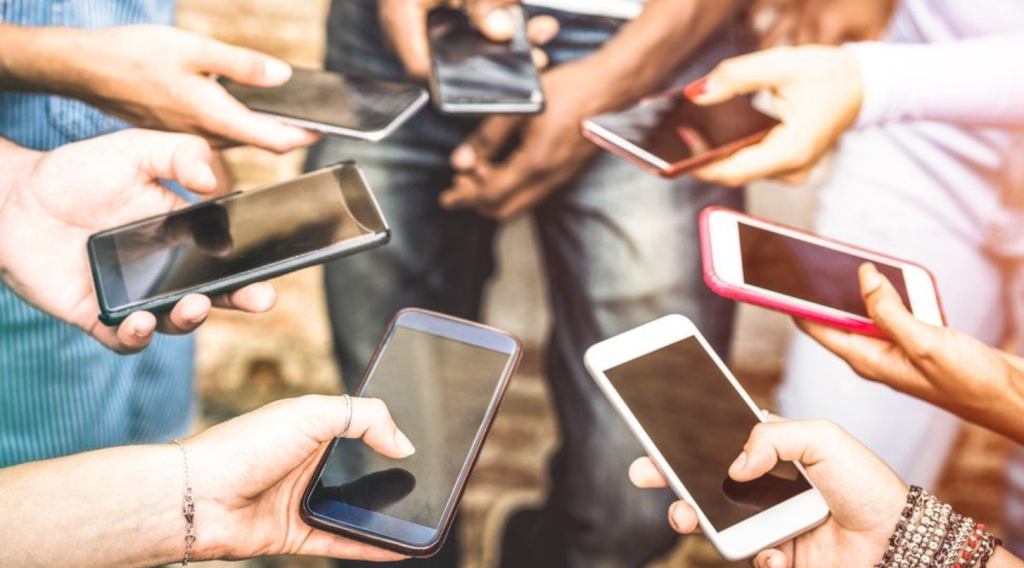
1. Cell phones save us money.
They are almost ubiquitous and can reduce the stress and cost of our infrastructure.
2. Cell phones can help students be more organized
Most students don’t carry paper plans. We need to integrate their cell phones and/or touch devices as their plan-give them homework reminders, let them vote, podcast, podcast, blog and learn to use these mobile devices. They are always on-the-go, which is perfect for being a planner. When I took Franklin Covey’s planning course, the first rule was “Take your planner with you.” The kids can get reminders from their Google Calendar, which is integrated with the calendar I use for planning.
3. It keeps the kids safer.
Due to safety issues, I think eventually someone will be held liable for a student getting in trouble and not being able to use their cell phone. I think all schools should provide text notification services in the event of an emergency, which is an important lifeline to safety.
4. It allows sensitive issues to remain confidential.
I have a real problem with children’s names being called out loud for detention or even coming to the office. This is private. I think a text message from the front desk before something like this happens is more polite and might get them there sooner.
5. It takes the pressure off the network.
Cell phones are a separate network, so they don’t go through the local wireless network. Their effective use can provide an alternative method of accessing the Internet and/or checking short messages.
6. It takes pressure off the IT department.
Cell phone troubleshooting is not necessary. If a child has a problem, let them use a laptop, check out a touch or use a computer from the library. However, using cell phones for small inquiries and tasks reduces the use of computers for small tasks.
7. It speeds up information retrieval.
If you don’t turn on your cell phone – there is zero startup time. If you have to turn it on, you will see 3-4 seconds. Calculate the startup time of a laptop. I have a computer that takes at least 3 minutes to boot up. I find it much easier to have my students use texting to define words and google queries.
8. It allows us to teach kids digital responsibility and citizenship.
I was at Disney and a kid went missing. He knew his phone number but not his area code. I used a Google search to find the area code and the mom was there in no time. Kids should know how to easily retrieve information from text messages. Additionally, self-control with texting is a recognized problem for many children. Learning to discipline themselves to use this tool when appropriate is part of life. By allowing them to be present rather than being used, we allow children to learn the self-discipline to focus and use the tool when appropriate.
I believe in allowing distractions in my classroom and coaching kids to focus. I think this is much better than the “police state” style filtering and technology policies that many schools have.
I would argue that by “banning” cell phones, we have pushed them into the private areas of the school, such as bathrooms and locker rooms, which is exactly where we don’t want them! (See the list of rules below.)
9. It models effective change and innovation.
In Hall-Davidson’s speech, he mentioned that Cuba finally allowed cell phone use in the country last year. Where is cell phone use still prohibited? The Taliban and schools are the only two entities in the world that currently ban cell phone use.
It’s a useful tool and part of life. Hall also mentioned how calculators were banned in the 1970s. Now we use them. It’s time to “get over it” and “live with it”.
10. You’re fighting a battle you can’t win.
Many educators are truly seeing that banning cell phones is not a battle that will be won. I think parents will require their children to wear them for safety reasons. The Guardian feature allows parents to use GPS to know where their child is at all times. It’s something parents will ask for and their kids will do the same. I just think it’s moving in that direction.

So how do we “handle” cell phones?
The same way we “handle” scissors.
- Age appropriate use and settings.
- If we catch a child running with scissors, we will discipline him – not throw all the scissors away!
- Establish an acceptable cell phone use policy for children and parents.
- Communicate fully so that what parents do at school doesn’t come at an unacceptable cost.
- Share best practices for cell phone use.
- Encourage all companies that provide educational services to allow cell phone integration into almost everything.
- Use the cell phone for what it’s good for and put it away when not in use. If they’re out when they’re not supposed to be, we’ll deal with the kid and put the phone on our desk. (If they are being used without me telling them, I’ll pick them up.)
- If we are concerned about cell phones, then move to 1:1 mobile devices like touch, which I personally think is better than cell phones in most cases.
- I would ask the school to adopt a rule at the school as per CUE hotels. I would like all bathrooms and locker rooms to have a sign that reads, “The use of cell phones, photography, and video devices is strictly prohibited in all bathrooms, locker rooms, and any area used as a changing area.” In fact, I think this should be the law everywhere. The time is ripe for this law, and the reason we didn’t implement it sooner is because we said we wouldn’t allow cell phones. What we are doing is pushing these devices into private areas, which is where we don’t want them.
